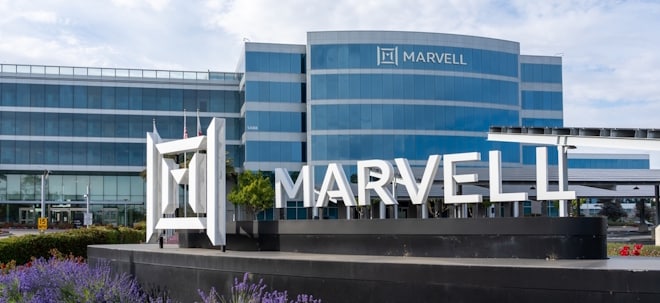Heparin Market to Grow by USD 3.34 Billion (2024-2028), Driven by Coagulation Disorder Prevalence and AI Impacting Market Trends - Technavio
NEW YORK, Dec. 11, 2024 /PRNewswire/ -- Report on how AI is redefining market landscape - The global heparin market size is estimated to grow by USD 3.34 billion from 2024-2028, according to Technavio. The market is estimated to grow at a CAGR of 7.22% during the forecast period. Increasing prevalence of coagulation disorders is driving market growth, with a trend towards increasing R and D activities and new therapeutic applications of heparin. However, side effects of heparin poses a challenge. Key market players include Aspen Pharmacare Holdings Ltd, B.Braun SE, Baxter International Inc., Dr Reddys Laboratories Ltd., Eisai Co. Ltd., Fresenius SE and Co. KGaA, Hebei Changshan Biochemical, Hikma Pharmaceuticals Plc, Laboratorios Farmaceuticos ROVI S A, LEO Pharma AS, Nanjing Kingfriend Biochemical, Nichi Iko Pharmaceutical Co. Ltd., Novartis AG, Pfizer Inc., Sanofi SA, Shanghai Fosun Pharmaceutical Group Co. Ltd., Shenzhen Techdow Pharmaceutical, Teva Pharmaceutical Industries Ltd., Viatris Inc., Opocrin SpA, Pfizer Inc.; GlaxoSmithKline plc; Sandoz (Novartis AG)
Key insights into market evolution with AI-powered analysis. Explore trends, segmentation, and growth drivers- View Free Sample PDF
Heparin Market Scope | |
Report Coverage | Details |
Base year | 2023 |
Historic period | 2018 - 2022 |
Forecast period | 2024-2028 |
Growth momentum & CAGR | Accelerate at a CAGR of 7.22% |
Market growth 2024-2028 | USD 3.34 billion |
Market structure | Fragmented |
YoY growth 2022-2023 (%) | 6.75 |
Regional analysis | Europe, North America, Asia, and Rest of World (ROW) |
Performing market contribution | Europe at 34% |
Key countries | US, UK, Germany, France, China, Canada; Italy; Spain; Denmark; Sweden; Norway; Japan; India; Australia; Thailand; South Korea; Brazil; Mexico; Argentina; South Africa; Saudi Arabia; UAE; Kuwait |
Key companies profiled | Aspen Pharmacare Holdings Ltd, B.Braun SE, Baxter International Inc., Dr Reddys Laboratories Ltd., Eisai Co. Ltd., Fresenius SE and Co. KGaA, Hebei Changshan Biochemical, Hikma Pharmaceuticals Plc, Laboratorios Farmaceuticos ROVI S A, LEO Pharma AS, Nanjing Kingfriend Biochemical, Nichi Iko Pharmaceutical Co. Ltd., Novartis AG, Pfizer Inc., Sanofi SA, Shanghai Fosun Pharmaceutical Group Co. Ltd., Shenzhen Techdow Pharmaceutical, Teva Pharmaceutical Industries Ltd., Viatris Inc., Opocrin SpA, Pfizer Inc.; GlaxoSmithKline plc; Sandoz (Novartis AG) |
Market Driver
The Heparin market is experiencing significant growth due to the rising prevalence of venous thromboembolism (VTE) and blood clotting disorders. VTE includes deep vein thrombosis and pulmonary embolism, which can lead to serious complications like heart attacks and strokes. Heparin, an injectable anticoagulant, is widely used to prevent blood clotting in veins and arteries. Both unfractionated heparin, derived from animal sources like bovine and porcine, and plasma-derived therapies (PDTs) are popular. However, challenges like fungal infections, counterfeit drugs, and chronic diseases such as diabetes, cancer, and cardiovascular diseases (CVD) increase the market demand. The geriatric population, accident victims, and those with orthopedic disorders are significant patient groups. Heparin is administered via subcutaneous injection or intravenous infusion, depending on the condition. Major players include Baxter International's Optimvia, which offers both bovine and porcine heparin. Other applications include atrial fibrillation and thromboprophylaxis.
Heparin, discovered in 1961, is a universal anticoagulant used to treat hemostasis and thrombosis. Its applications in surgery, interventions, and medicine have significantly impacted healthcare. Major advancements include fractionated heparin and low-molecular-weight heparin, expanding thrombosis management options. These developments have revolutionized scientific approaches to heparin use.
Request Sample of our comprehensive report now to stay ahead in the AI-driven market evolution!
Market Challenges
- Heparin, an injectable anticoagulant, plays a crucial role in preventing blood clotting in individuals at risk of venous thromboembolism (VTE), including those with accidents, blood clotting disorders, and chronic diseases like cardiovascular diseases (CVD), cancer, chronic respiratory diseases, diabetes, and atrial fibrillation. However, challenges persist in ensuring patient safety. These include the risk of VTE in the geriatric population and those with orthopedic disorders. Unfractionated heparin, derived from animal sources like bovine and porcine, faces challenges such as fungal infections and counterfeit drugs. PDTs like Optimvia offer alternatives, but come with their own risks, including bleeding and allergic reactions. Proper administration, whether subcutaneous or intravenous, is essential to mitigate risks. Intravenous infusion and subcutaneous injection are common methods, while deep vein thrombosis conditions like pulmonary embolism and heart attacks require immediate attention. Overall, addressing these challenges is vital to improving patient outcomes and ensuring the safety and efficacy of heparin treatments.
- Heparin, an anticoagulant discovered in the 1930s, is widely used to prevent and treat thrombosis, a condition characterized by the formation of blood clots. While heparin's efficacy is undeniable, its use comes with notable side effects. The most significant risks include bleeding, heparin-induced thrombocytopenia, osteoporosis, skin reactions, eosinophilia, and allergic reactions. Among these, bleeding and thrombocytopenia are the most common concerns. Despite these challenges, heparin remains the preferred anticoagulant for acute thrombotic incidents due to its proven effectiveness. New anticoagulant drugs are under development, but heparin's long-standing reputation and usage make it a crucial player in the anticoagulant market.
Discover how AI is revolutionizing market trends- Get your access now!
Segment Overview
This heparin market report extensively covers market segmentation by
- 1.1 Low-molecular-weight heparin
- 1.2 Others
- 2.1 Subcutaneous injection
- 2.2 Intravenous infusion
- 3.1 Europe
- 3.2 North America
- 3.3 Asia
- 3.4 Rest of World (ROW)
1.1 Low-molecular-weight heparin- Low-molecular-weight heparin (LMWH) is a type of heparin derived from unfractionated heparin through chemical or enzymatic methods. It inhibits coagulation by activating antithrombin III, preventing the activation of factor Xa and subsequent conversion of prothrombin to thrombin, and the formation of fibrin from fibrinogen. LMWH has several advantages over unfractionated heparin, including improved bioavailability, prolonged antithrombotic activity, and reduced need for regular blood monitoring. The British National Formulary and the National Institute for Health and Care Excellence have approved LMWH for various clinical indications, including deep vein thrombosis prophylaxis in medium- and high-risk groups, treatment of deep vein thrombosis and pulmonary embolism in nonpregnant women, treatment of venous thromboembolism in pregnancy, treatment of ST-elevation myocardial infarction in patients undergoing percutaneous coronary intervention, and prevention of clotting in extracorporeal circuits. Unfractionated heparin and LMWH are self-administered subcutaneously. Several LMWH options are available in the market, including Fragmin (dalteparin), Lovenox (enoxaparin), parnaparin, certoparin, nadroparin, reviparin, and bemiparin. Each product has unique advantages, such as improved bioavailability, longer half-life, and lower incidence of adverse effects. For instance, dalteparin has a mean molecular weight of approximately 5,000 Da, improved bioavailability, and a lower incidence of heparin-induced thrombocytopenia and thrombosis. Lovenox (enoxaparin) is associated with a low incidence of adverse effects and a reduced need for laboratory monitoring. Parnaparin has greater efficacy, greater bioavailability, and a longer half-life, permitting once-daily administration. Certoparin has been proven effective and safe in preventing venous thromboembolism in different medical and surgical settings. Nadroparin has a greater ratio of anti-factor Xa to anti-factor Ha activity, greater bioavailability, and a longer duration of action. Reviparin has a narrow molecular weight distribution profile and is effective in preventing deep vein thrombosis at different daily doses. Bemiparin has the lowest mean molecular weight, the longest half-life, and the largest anti-factor Xa activity, making it effective in preventing venous thromboembolism in moderate- and high-risk surgical patients and during hemodialysis. The wide availability of LMWH products and their advantages and efficacy increase the adoption of LMWH, contributing to the growth of the LMWH segment in the global heparin market during the forecast period.
Download a Sample of our comprehensive report today to discover how AI-driven innovations are reshaping competitive dynamics
Research Analysis
The Heparin market refers to the global trade of Heparin, an essential injectable anticoagulant used to prevent and treat various blood clotting disorders. Heparin is primarily used to manage Venous Thromboembolism (VTE), a condition characterized by the formation of blood clots in the veins, which can lead to serious complications like Deep Vein Thrombosis (DVT) and Pulmonary Embolism (PE). Accidents, chronic blood diseases such as diabetes, and the elderly demographic are significant risk factors for VTE. Heparin is also used to prevent arterial thromboembolism and is crucial in the blood donation system to prevent clotting. Unfractionated heparin, an animal-derived product, is the most commonly used form of heparin. Plasma-derived therapies (PDTs) are alternative options. Heparin is administered through subcutaneous or intravenous (IV) methods and is used to manage conditions like Atrial Fibrillation and blood clotting disorders.
Market Research Overview
The Heparin market refers to the global trade of heparin, an injectable anticoagulant used to prevent and treat various blood clotting disorders. Heparin is primarily used to manage Venous Thromboembolism (VTE), a condition characterized by the formation of blood clots in the veins, which can lead to complications such as deep vein thrombosis (DVT) and pulmonary embolism (PE). Heparin is also used to prevent clots in arteries, particularly in patients with conditions like atrial fibrillation, heart attacks, and strokes. This drug is derived from animal sources, including porcine and bovine, and is administered either subcutaneously or intravenously. Heparin is essential in managing chronic diseases like diabetes, cancer, and chronic respiratory diseases, as well as noncommunicable diseases (NCDs) and cardiovascular diseases (CVD). However, the market faces challenges such as counterfeit drugs, fungal infections, and the risk of bleeding. The geriatric population and patients with orthopedic disorders are significant consumer groups. Heparin comes in different forms, including Unfractionated Heparin and Plasma-derived therapies (PDTs). It is used in clinics for various indications, including subcutaneous administration for DVT prevention and intravenous infusion for acute PE treatment.
Table of Contents:
1 Executive Summary
2 Market Landscape
3 Market Sizing
4 Historic Market Size
5 Five Forces Analysis
6 Market Segmentation
- Product
- Low-molecular-weight Heparin
- Others
- Route Of Administration
- Subcutaneous Injection
- Intravenous Infusion
- Geography
- Europe
- North America
- Asia
- Rest Of World (ROW)
- Type
- Application
- End-use
- Source
7 Customer Landscape
8 Geographic Landscape
9 Drivers, Challenges, and Trends
10 Company Landscape
11 Company Analysis
12 Appendix
About Technavio
Technavio is a leading global technology research and advisory company. Their research and analysis focuses on emerging market trends and provides actionable insights to help businesses identify market opportunities and develop effective strategies to optimize their market positions.
With over 500 specialized analysts, Technavio's report library consists of more than 17,000 reports and counting, covering 800 technologies, spanning across 50 countries. Their client base consists of enterprises of all sizes, including more than 100 Fortune 500 companies. This growing client base relies on Technavio's comprehensive coverage, extensive research, and actionable market insights to identify opportunities in existing and potential markets and assess their competitive positions within changing market scenarios.
Contacts
Technavio Research
Jesse Maida
Media & Marketing Executive
US: +1 844 364 1100
UK: +44 203 893 3200
Email: media@technavio.com
Website: www.technavio.com/
![]() View original content to download multimedia:https://www.prnewswire.com/news-releases/heparin-market-to-grow-by-usd-3-34-billion-2024-2028-driven-by-coagulation-disorder-prevalence-and-ai-impacting-market-trends---technavio-302328479.html
View original content to download multimedia:https://www.prnewswire.com/news-releases/heparin-market-to-grow-by-usd-3-34-billion-2024-2028-driven-by-coagulation-disorder-prevalence-and-ai-impacting-market-trends---technavio-302328479.html
SOURCE Technavio



